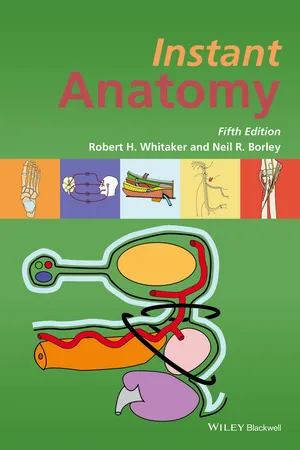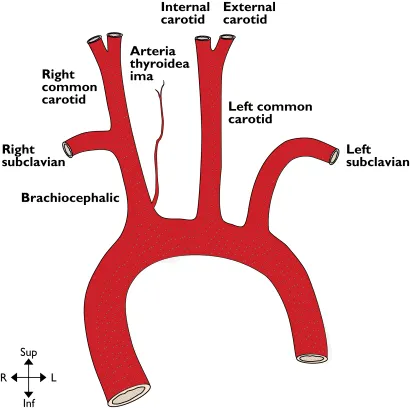
- English
- ePUB (mobile friendly)
- Available on iOS & Android
Instant Anatomy
About this book
Instant Anatomy presents anatomy and anatomical relationships in a simple, unique, schematic manner to aid the speedy understanding and retrieval of anatomical facts. It shows structures such as nerves and blood vessels in their entirety, unlike the partial, regional presentations given in most textbooks.
Covering the major aspects of anatomy, each section presents the relevant structures in double page spreads, with clear, full-colour diagrams on the left and concise text for each structure on the right. This new fifth edition includes more surface anatomy such as new myotome maps, bones of the hands and feet, principles of movement at shoulder and hip and images to clarify the understanding of the inguinal region and the lesser sac of the stomach.
Ideal for use alongside a core anatomy textbook, Instant Anatomy is the perfect quick reference guide for medical students, surgeons, radiologists and those in many other specialties. The companion website at www.instantanatomy.net with its podcasts and wide ranging multiple choice questions provide invaluable exam preparation.
Frequently asked questions
- Essential is ideal for learners and professionals who enjoy exploring a wide range of subjects. Access the Essential Library with 800,000+ trusted titles and best-sellers across business, personal growth, and the humanities. Includes unlimited reading time and Standard Read Aloud voice.
- Complete: Perfect for advanced learners and researchers needing full, unrestricted access. Unlock 1.4M+ books across hundreds of subjects, including academic and specialized titles. The Complete Plan also includes advanced features like Premium Read Aloud and Research Assistant.
Please note we cannot support devices running on iOS 13 and Android 7 or earlier. Learn more about using the app.
Information
1: Arteries
- Coronary arteries
- Ascending & arch of aorta
- Internal carotid artery, vertebrobasilar system & circle of Willis
- Ophthalmic artery
- External carotid artery
- Maxillary artery
- Middle meningeal artery
- Subclavian artery
- Axillary artery
- Brachial artery
- Radial artery
- Ulnar artery
- Thoracic (descending) aorta
- Abdominal aorta
- External iliac artery
- Coeliac trunk
- Superior mesenteric artery
- Inferior mesenteric artery
- Internal iliac artery
- Femoral artery
- Popliteal artery
- Anterior tibial artery
- Posterior tibial artery
- Fibular (peroneal) artery
- Arterial anastomoses around scapula
- Arterial anastomoses around hip

Coronary Arteries

Ascending & Arch of Aorta

Table of contents
- Cover
- The Authors
- Title Page
- Copyright
- Preface to Fifth Edition
- Preface to First Edition
- Notes on the Text
- Chapter 1: Arteries
- Chapter 2: Veins
- Chapter 3: Lymphatics
- Chapter 4: Autonomic Nervous System
- Chapter 5: Cranial Nerves
- Chapter 6: Peripheral Nerves
- Chapter 7: Dermatomes and Cutaneous Nerve Distribution
- Chapter 8: Muscles
- Chapter 9: Joints
- Chapter 10: Ossification Times
- Chapter 11: Foramina—Skull and Spine
- Chapter 12: Position of Structures According to Vertebral Levels Position of Structures According to Vertebral Levels
- Chapter 13: Pharyngeal Derivatives
- Chapter 14: Surface Anatomy and Key Areas
- End User License Agreement